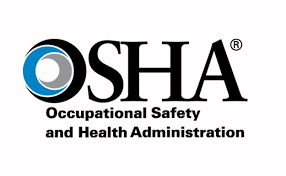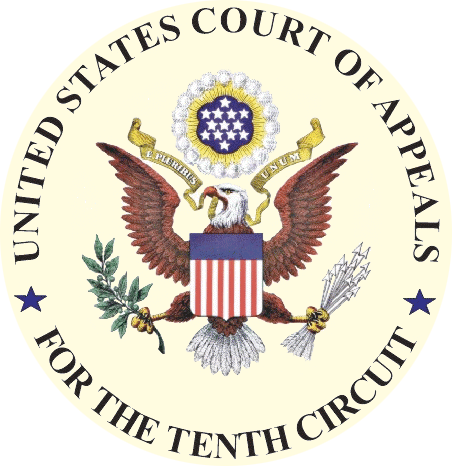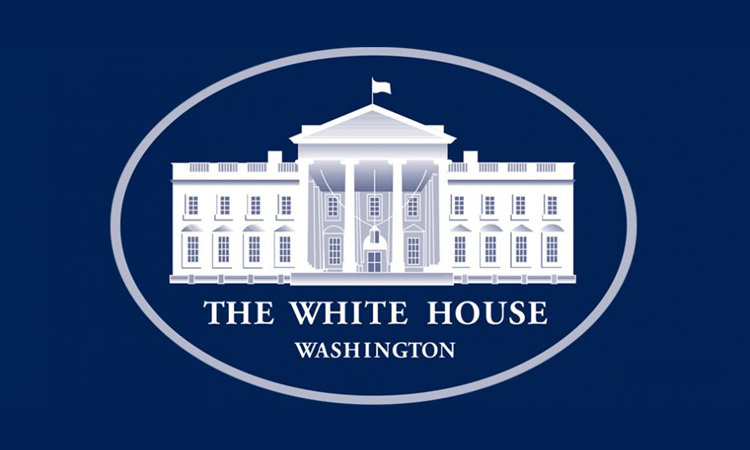
- DE Talk Podcast Explored Camaraderie & Meaningful Impact of Veteran ERGs
- EEOC Released Its FY 2023 Litigation Report & Updated 5-Year “Data Dashboard”
- OMB Announced Finalized Overhaul to Federal Race & Ethnicity Data Collection Standards
- VEVRAA Hiring Benchmark Dropped Slightly to 5.2%
- Construction Trade Association Sued to Stop FAR Council’s Rule Requiring Unionized Workforces on Large Federal Construction Projects
- OSHA Announced Finalized, Union-Friendly Regulations to Allow Employee Representatives to Attend Safety Inspections
- In Brief
- New Publications
- Looking Ahead: Upcoming Date Reminders
Tuesday, March 26, 2024: DE Talk Podcast Explored Camaraderie & Meaningful Impact of Veteran ERGs
With DEI a high priority in today’s work environment, many companies are establishing employee resource groups (“ERGs”) to bring people together in celebration and support of both their commonalities and their differences. Tune into this episode as we sit down with Dave Erdmann, United States Marine Veteran and Valvoline’s Director of Pilot and Incubation Enablement, and Eric Bevevino, United States Navy Reserve Veteran and Valvoline Global Operations’ Senior Director, Channel Partner & Heavy Duty Sales. They will discuss their roles as co-leads of their organizations’ joint Veterans ERG, the benefits and barriers faced while working to gain momentum for this initiative, tips for gaining buy-in from employees and leadership and honoring the true spirit behind your program to go beyond the workplace and make a meaningful impact in the lives of your employees.
Listen to our DE Talk Podcasts via any of the options below and subscribe to receive updates whenever a new podcast is available.Apple • Spotify • Google • Stitcher • iHeartRadio • Stitcher • TuneIn • Overcast • Pocket Casts • Castro • Castbox • Podchaser • RSS Feed
…or your preferred Podcast provider!
Wednesday, March 27, 2024: EEOC Released Its FY 2023 Litigation Report & Updated 5-Year “Data Dashboard”
Agency Touted 50% Increase Over FY 2022 Levels

FY 2023 Litigation Report
In a corresponding press release, the EEOC touted that, in FY 2023, it “filed 143 merits lawsuits, 25 of which were systemic, and resolved 98 suits obtaining over $22.6 million in monetary relief for victims of employment discrimination. The 143 suits represent an increase of more than 50% compared to FY 2022 levels.”
We reported last March 2023 that the EEOC General Counsel’s Office had experienced a down year during FY 2022 falling far back from the 114 lawsuits the agency had filed in FY 2021 with fewer lawyers. FY 2023’s rebound from the Office of General Counsel’s down year restores its productivity to that of FY 2021 and increases its filings in FY 2023 commensurate with its increased staffing. So, it seems a bit exaggerated that the EEOC is suddenly exuberant because of productivity that is now basically back to normal.
The agency cited other FY 2023 highlights including:
- The most frequently alleged bases of discrimination were retaliation (39.2%), sex (35%), disability (34.3%), and race (16.8%);
- At the end of FY 2023, the EEOC had 227 merits cases on its active district court docket, of which 95 (41.8%) were class or systemic cases;
- It filed 10 briefs on appeal in Commission cases, seven as appellant and three as appellee, and one brief in opposition to interlocutory appeal. The EEOC filed 34 briefs as amicus curiae in private suits;
- It resolved 98 merits suits in FY 2023, recovering over $22.6 million for 968 individuals and achieved a successful outcome (settlement or favorable judgment) in 91% of all suit resolutions; and
- It resolved 14 systemic suits, obtaining just over $11.7 million for approximately 806 individuals and significant equitable relief.
Updated Data Dashboard
The Commission expanded its library of EEOC Explore data visualizations – of aggregated charge data, workforce demographic data, and limited employer-reported pay data – to include selected litigation cases resolved in FY 2019 to FY 2023.
Thursday, March 28, 2024: OMB Announced Finalized Overhaul to Federal Race & Ethnicity Data Collection Standards
Revisions Effective Immediately
First Revisions Since 1997

Covered federal Government contractors employing 50 or more employees and employers subject to Title VII with 100 or more employees also use the same Statistical Policy Directive-15 definitions of race and ethnicity when filing annual EEO-1 Surveys with the Joint Reporting Committee of OFCCP and the Equal Employment Opportunity Commission.
U.S. Chief Statistician, Dr. Karin Orvis, first announced the finalized revisions in a blog posted Thursday, and OMB officially published them in Friday’s edition of the Federal Register. The preamble ends and the text of SPD 15 itself begins here (starting on page 22191 of the pdf version).
Section C of the preamble explains the revisions by:
- describing the initial proposals of the Working Group;
- summarizing public input;
- describing the final recommendations of the Working Group (and how they differed, if at all, from the initial proposals); and
- presenting and explaining OMB’s decisions.
What Did OMB Revise?
Based in many cases on the recommendations of the Federal Interagency Technical Working Group on Race and Ethnicity Standards (“Working Group”), OMB revised SPD 15 to:
- collect data using a single combined race and ethnicity question, allowing multiple responses;
- add Middle Eastern or North African (“MENA”) as a minimum reporting category, separate and distinct from the White category.
- Thus, the new set of minimum race and/or national origin reporting categories (these are not necessarily “Protected Groups”) are:
- American Indian or Alaska Native
- Asian
- Black or African American
- Hispanic or Latino
- Middle Eastern or North African
- Native Hawaiian or Pacific Islander; and
- Thus, the new set of minimum race and/or national origin reporting categories (these are not necessarily “Protected Groups”) are:
- require the collection of more detail beyond the minimum race and ethnicity reporting categories, unless an agency requests and receives an exemption from OMB’s Office of Information and Regulatory Affairs because the potential benefit of the detailed data would not justify the additional burden to the agency and the public or the additional risk to privacy or confidentiality;
- update terminology in SPD 15; and
- require agency Action Plans on Race and Ethnicity Data and timely compliance with this revision to SPD 15.
Additional Specifics of Note Regarding the Revised Items Listed Above
As to the above items, we detail below some specifics of note that OMB addressed in the preamble of the Federal Register notice.
Single combined race and ethnicity question. OMB pointed out that “[b]ecause respondents may perceive categories like Hispanic or Latino or MENA as either a race or ethnicity, the revised SPD 15 requires agencies to treat the categories equally and report them as “race and/or ethnicity” categories;”
Defining race and ethnicity. OMB explained that “[f]or purposes of SPD 15, the race and ethnicity categories set forth are sociopolitical constructs and are not an attempt to define race and ethnicity biologically or genetically.”
Moreover, [t]hey are not to be used as determinants of eligibility for participation in any Federal program. The standards do not require any agency or program to collect race and ethnicity data; rather they provide a common language for uniformity and comparability in the collection and use of race and ethnicity data by Federal agencies.”
Requiring collection of detailed data by default. While OMB accepted the Working Group’s recommendation to require the collection of detailed race and ethnic data by default, it added the following caveats:
“However, the intent of SPD 15 to produce consistent and comparable data is best served by providing a common framework for the collection of detailed data, rather than allowing each agency to determine what additional detail to collect. Therefore, agencies are required to collect the detailed categories described in this Notice as a default. These detailed categories were selected to represent the largest population groups within the minimum categories, according to the results of the 2020 Census. Selecting the largest groups by United States population prioritizes the utility of the data by maximizing the sample sizes. Small sample sizes are often the primary barrier to publication of data for specific groups; small samples decrease precision, make it harder to identify differences between groups, and increase privacy risk.
OMB recognizes racial and ethnic identities and terminology are continuously changing and SPD 15 needs to balance the need for consistency with the ability to adapt to change and meet specific program needs. An agency may submit a request to OIRA for an exemption to the requirement to collect more detailed data beyond the minimum categories if the agency determines that the potential benefit of the detailed data would not justify the additional burden to the agency and the public or the additional risk to privacy or confidentiality. Agencies may also submit a request to OIRA for a variance to the detailed categories if they determine that collecting different detailed data categories than the ones listed in SPD 15 provides more useful or accurate data for the collection’s specific context and intended uses. Any variances in detailed data collection must be able to be aggregated up to the required minimum categories. OIRA will review agency requests for exceptions and variances, and they will only be approved if they contain sufficient justification. Finally, due to the extensive testing done in the context of the American Community Survey, agencies may collect the detailed categories used on the most recent version of that survey, should they differ from the detailed categories listed in SPD 15, without further justification.”
Data collection by proxy. The revised SPD 15 allows for data collection by proxy. OMB added two important notes in this regard:
First, OMB accepted the Working Group’s recommendation to encourage agencies to transparently describe how race and ethnicity data were collected and generated, and how nonresponse or other missing data were assigned or allocated. However, OMB modified this recommendation as follows:
“For statistical survey reporting, agencies are required, rather than encouraged, to transparently describe whether race and ethnicity data are self-reported or collected by proxy, along with any imputation or coding procedures. With respect to other agency products, agencies are strongly encouraged to provide this information whenever possible. OIRA will continue to review agency PRA requests to ensure that race and ethnicity data are collected by self-report whenever possible.”
Second, OMB pointed out:
“The method of data collection has implications for the quality and fitness for use of the resulting data. Wherever possible, race and/or ethnicity data should be collected through self-report, where the respondents directly provide their own race and/or ethnicity. In cases where self-report is not possible, data may be collected by proxy reporting, where a person knowledgeable of another’s race and/or ethnicity responds on their behalf; by record matching, where existing records on an individual that contain their race and/or ethnicity are used to supply the information; or by observer identification, where an observer uses their best judgement of the most appropriate race and/or ethnicity categories in which to report an individual.
When data are collected through visual observation, agencies are not required to collect detailed categories and are encouraged to instead use the minimum categories. For statistical survey reporting, agencies must maintain records on the mode and method of data collection, and how nonresponse or other missing data were assigned or allocated and must make that information available to data users to allow them to evaluate the utility, objectivity, and integrity of the data. Agencies should also maintain and provide this information for administrative, grant, and compliance-related data collections whenever feasible. Agencies should use the terminology in this section when describing the method of collection and should make it a practice to describe the method of data collection in any reports on data collection design or methods.
When coding write-in data, imputing missing data, or otherwise editing responses, agencies must adopt practices that maximize comparability between data collected on forms and surveys with and without write-in fields. Doing so will improve the comparability of race and ethnicity data across Federal datasets. For statistical survey reporting, agencies must maintain records on data processing procedures (such as coding, editing, and imputation practices), and must make that information available to data users to allow them to evaluate the utility, objectivity, and integrity of the data. Agencies should also maintain and provide this information for administrative, grant, and compliance related data collections whenever feasible.”
Updated Terminology. Of note as to the updated terminology, OMB accepted the Working Group’s recommendations to:
- remove “majority” and “minority” terminology, except when statistically accurate and used for statistical descriptions or when legal requirements call for use of the terms;
- remove the phrase “who maintains tribal affiliation or community attachment” in the American Indian or Alaska Native (AIAN) definition;
- change “(including Central America)” to having “Central America” listed co-equally with North and South America in the AIAN definition;
- replace “Far East” with “Central or East Asia” and “Indian Subcontinent” with “South Asia” in the Asian definition;
- remove “Negro” from the Black or African American definition;
- correct “Cuban” being listed twice in the Hispanic or Latino definition;
- remove “. . . regardless of race. The term `Spanish origin’ can be used in addition to `Hispanic or Latino’ from the Hispanic or Latino definition. OMB modified that recommendation a bit so that this definition now reads, “Hispanic or Latino. Includes individuals of Mexican, Puerto Rican, Salvadoran, Cuban, Dominican, Guatemalan, and other Central or South American or Spanish culture or origin;” and
- remove “Other” from the “Native Hawaiian and Other Pacific Islander” category title.
The revised definitions for each of the race and ethnic categories are in SPD 15 here.
Additional topics
In the preamble to the finalized revisions, OMB discussed additional topics, including:
- the order of minimum categories;
- terms for minimum categories;
- collecting data related to descent from persons who were enslaved in the United States; and
- additional comments not covered above.
But Wait There’s More…
OMB, in the preamble, also discussed topics for further research.
On its website, the Working Group also posted its Final Report and Annexes (see the right side of the webpage) and promised additional website updates “in the coming days.”
Separately, the U.S. Census Bureau released a statement promising that it “will keep the public informed and determine a regular cadence for communications as we develop plans to implement the changes in our censuses and surveys.”
…Including New OMB Interagency Committee on Race and Ethnicity Statistical Standards
In her blog, Dr. Orvis noted:
“… this review process showed that racial and ethnic identities, concepts, and data needs continue to evolve. To improve the ability of Directive No. 15 to adapt and better meet those needs, OMB is establishing an Interagency Committee on Race and Ethnicity Statistical Standards, convened by the Office of the U.S. Chief Statistician, that will maintain and carry out a government-wide research agenda and undertake regular reviews of Directive No. 15. Some areas of interest identified in the technical expert research, as well as by stakeholders and engaged members of the public, lacked sufficient data to determine the effects of potential changes. Those areas of interest have now been identified as a top priority for additional research and data development in advance of future reviews. The updated standards identify several key research topics for the Interagency Committee to focus on initially. For more information on these research topics and the planned schedule for future reviews, see the updated Directive No. 15.”
Effective Dates
Importantly, OMB noted that:
“The provisions of these standards are effective March 28, 2024 for all new record keeping [sic] or reporting requirements that include racial or ethnic information. All existing record keeping [sic] or reporting requirements should be made consistent with these standards through a non-substantive change request to the Office of Information and Regulatory Affairs (OIRA), or at any time a collection of information is submitted to OIRA for approval of either a revision or extension under the Paperwork Reduction Act of 1995 (PRA), as soon as possible, but not later than March 28, 2029.”
In her blog, Dr. Orvis added that OMB had instructed the agencies to finalize their implementation plans to migrate their race and national origin data collection systems, forms, and reports within the next 18 months against a hope that a uniform data collection applying the new definitions would emerge in the next five years:
“…the standards instruct federal agencies to begin updating their surveys and administrative forms as quickly as possible, submit an Agency Action Plan for complete compliance within 18 months – which will be publicly available, and finish bringing all data collections and programs into compliance with the updated standards within five years of today’s date.”
Employers may thus expect to see OFCCP and the EEOC develop and submit to OMB “Agency Action Plans” on timelines each agency will develop. The EEO-1 report and related reports in that reporting series, including IPEDs reports and potentially Affirmative Action Plans, will be affected. Federal contractors and employers should feel free to express their opinions to OFCCP and the EEOC if the agencies do not ask soon.
How We Got Here
In June 2022, Dr. Orvis first announced plans to update SPD 15 (see our story here). That announcement discussed, among other things, the establishment of the Working Group. Our story on the Working Group’s five initial proposals is here.
We most recently reported on SPD 15 on May 30, 2023, when we reported the Working Group’s announcement that it was preparing its final recommendations to OMB. At that time, the Working Group stated that “OMB has set a goal to revise SPD 15 by Summer of 2024.” See that story for additional background details on the process leading up to the finalized revisions. For additional discussion on the MENA category, see our story here.
Last June, we also discussed how three Supreme Court Justices squared off over the accuracy and utility of SPD 15 in the Harvard/UNC admissions case decision.
Thursday, March 28, 2024: VEVRAA Hiring Benchmark Dropped Slightly to 5.2%
Steady Benchmark Decline Continued
Time to Update VEVRAA AAPs

The following table shows the decline of the Benchmark since 2020:
National Annual Veteran Hiring Benchmark
|
National Percentage of Veterans |
|
| Effective Date Range | National Percentage of Veterans in the Civilian Labor Force |
| 03/31/2024 – | 5.2% |
| 03/31/2023 – 03/30/2024 | 5.4% |
| 03/31/2022 – 03/30/2023 | 5.5% |
| 03/31/2021 – 03/30/2022 | 5.6% |
| 03/31/2020 – 03/30/2021 | 5.7% |
For more details on what the VEVRAA Benchmark means for OFCCP compliance, see our story from last year here. We have additional background in our blog from 2019: VEVRAA Benchmark for Hires: How Much Do You Really Know About this Percentage and Its Meaning?
New compliance resources. OFCCP has also published two new examples to illustrate the use of the VEVRAA hiring Benchmark: 1) an example of the national benchmark and 2) an example of an individualized benchmark using the five-factor method. The agency also released a new course in its Contractor Compliance Institute on the VEVRAA hiring Benchmark.
Thursday, March 28, 2024: Construction Trade Association Sued to Stop FAR Council’s Rule Requiring Unionized Workforces on Large Federal Construction Projects

ABC filed its lawsuit (Case No. 3:24-cv-00318) in the U.S. District Court Middle District of Florida, Jacksonville Division. In its 48-page complaint, ABC asserted that the President lacked the legal authority to impose this regulation. Specifically, ABC alleged that the Rule violates the U.S. Constitution, the Administrative Procedure Act, the Federal Property Administrative Services Act, the Competition in Contracting Act, the National Labor Relations Act (“NLRA”), the Office of Federal Procurement Policy Act and the Regulatory Flexibility Act, by limiting competition and forcing large and small businesses to sign union agreements as a condition of winning a federal contract for construction services.
In our story on this Final Rule, we noted that it presented “substantial legal issues,” including whether this Rule would force non-unionized construction employers to violate Section 7 of the NLRA which guarantees employees free choice to form or reject unions in their workplaces.
Friday, March 29, 2024: OSHA Announced Finalized, Union-Friendly Regulations to Allow Employee Representatives to Attend Safety Inspections

Officially published in the Federal Register on Monday, April 1, the Final Rule provides that the representative(s) authorized by employees may be an employee of the employer or a third party. Further, such third-party employee representative(s) may accompany the OSHA Compliance Safety and Health Officer (“CSHO”) when, in the judgment of the CSHO, good cause has been shown why they are reasonably necessary to aid in the inspection. OSHA also clarified in the Final Rule that a third party may be reasonably necessary because of their relevant knowledge, skills, or experience with hazards or conditions in the workplace or similar workplaces, or language or communication skills.
Why Did OSHA Issue this Final Rule?
Section 8(e) of the Occupational Safety and Health (“OSH”) Act grants a representative of the employer and a representative authorized by employees the opportunity to accompany OSHA during the physical inspection of the workplace to aid the inspection.
While OSHA asserts it has long permitted employee representatives to be third parties pursuant to 29 CFR 1903.8(c), in February 2017, a federal district court in Texas concluded that this interpretation was not consistent with the then-existing regulation. In National Federation of Independent Business v. Dougherty (N.D. Tex., No. 3:16-CV-2568-D), the court concluded that the regulation only permitted employees of the employer to be authorized as representatives. However, the court also found that the OSH Act itself “merely provides that the employee’s representative must be authorized by the employees, not that the representative must also be an employee of the employer.”
In response to the court decision, OSHA began the process of revising its regulations at 29 CFR 1903.8(c). Its proposed version of the Rule was published on August 30. 2023 (see our story here).
What are the Specifics?
The finalized revisions to 1903.8(c) do not change the OSHA compliance officer’s authority to determine whether an individual is a representative authorized by employees (29 CFR 1903.8(b)). Also, the revisions do not affect other provisions of section 1903 that limit participation in walkaround inspections, such as the compliance officer’s authority to prevent an individual from participating in the walkaround inspection if their conduct interferes with a fair and orderly inspection (29 CFR 1903.8(d)) or the employer’s right to limit entry of employee authorized representatives into areas of the workplace that contain trade secrets (29 CFR 1903.9(d)).
How We Got Here
Last December, OSHA reported in its Fall 2023 Agenda that it was still analyzing the over 11,530 comments submitted on the proposed version of the Rule (see our story here). The agency discussed those comments, and its responses, including very limited changes made to the finalized version, in the preamble to the Final Rule beginning here.
OSHA submitted the Final Rule for OMB approval on February 9, 2023 (see our story here), and OMB approved it on March 20, 2023 (see our story here).
In Brief
Monday, March 11, 2024: U.S. Tenth Circuit Appellate Court Ruled State’s Mandatory DEI Training Did Not Violate Title VII or Equal Protection Clause

The Tenth Circuit also affirmed the lower court’s dismissal of his claim that the training requirement violated the Equal Protection Clause of the Fourteenth Amendment to the U.S. Constitution due to lack of standing because he was no longer employed by the Department of Corrections.
Wednesday, March 27, 2024: US DOL Offered Second Public Comment Period on Extension, Without Change, of Paperwork Requirements for its HIRE Vets Medallion Program

The 30-day Notice references VETS’ previous 60-day Notice published on January 19, 2024 (see our story here). The 60-day comment period closed on March 19, 2024. On March 21, VETS submitted a 23-page Supporting Statement to OMB (available for download here). On page 13 of the Supporting Statement, VETS reported that it did not receive any comments in response to the 60-day notice.
As a reminder, there is still time to apply – until April 30, 2024 – for the current HIRE Vets Medallion award cycle.
Thursday, March 28, 2024: OMB Issued Policy Requiring Federal Agencies to Appoint “Chief AI Officer”

The White House’s “Fact Sheet” outlining this new policy reported that since December, OMB and the White House Office of Science and Technology Policy have regularly convened the existing Chief AI Officers in a new Chief AI Officer Council to coordinate their efforts across the federal government and to prepare for implementation of OMB’s guidance. The policy also requires agencies to establish AI Governance Boards, chaired by each agency’s Deputy Secretary or equivalent, to coordinate and govern the use of AI across the agency.
OMB issued this policy pursuant to directives contained in President Biden’s sweeping, October 23, 2023, EO 14110 on the Safe, Secure, and Trustworthy Development and Use of Artificial Intelligence (see our story here.)
In a corresponding Federal Register Notice published Friday, OMB requested information from the public on the “responsible procurement of artificial intelligence in government.” The notice includes ten questions upon which OMB is seeking information. However, commenters may address other issues as well. Comments are due by April 29, 2024. You may submit them here or here.
New Publications
Monday, March 25, 2024: OFCCP updated its Contractor Portal Federal Contractor Briefing video for the new reporting cycle scheduled to run from April 1- July 1, 2024
Friday, March 29, 2024: E-Verify announced a preview video of its upcoming E-Verify+ program; the program is designed to modernize and streamline the Form I-9 and electronic verification process and enable employees to enter their own personal data and documentation.
Looking Ahead:
Upcoming Date Reminders
There are four NEW items added to our calendar this week:
November 2023: EEOC’s target date (now overdue) to publish its NPRM to amend its regulations on exemptions to certain recordkeeping and reporting requirements (RIN: 3046-AB28)
December 29, 2023: Statutory deadline (now overdue) for EEOC to finalize regulations to enforce the Pregnant Workers Fairness Act (RIN: 3046-AB30); EEOC submitted its Final Rule for OMB review on December 27, 2023
December 2023: U.S. OSHA’s current target date (now overdue) to publish its Final Rule on Occupational Exposure to COVID-19 in Healthcare Settings (RIN: 1218-AD36); On February 9, 2024, OSHA submitted its Final Rule to OMB for review and approval
March 11, 2024: Previous effective date of NLRB’s Final Rule on Standard for Determining Joint-Employer Status under the NLRA (per U.S. District Judge’s order previous February 26, 2024, effective date extended); On March 8, 2024, a U.S. District Judge vacated this Final Rule – stay tuned for further developments
March 2024: EEOC’s target date for proposal to amend its regulations regarding the electronic posting of the “Know Your Rights” Poster (RIN: 3046-AB29)
March 2024: U.S. NLRB’s target date for its Final Election Protection Rule (RIN: 3142-AA22)
April 1, 2024: Comments due on FAR Council’s Proposed Rule on “Pay Equity and Transparency in Federal Contracting”
NEW April 1, 2024: OFCCP scheduled to open its online Contractor Portal for covered federal Supply and Service contractors & subcontractors to certify that they have developed & maintained Affirmative Action Programs for each of their AAP Establishments or functional units
April 3 – April 5, 2024: DEAMcon24 New Orleans – The DEAMcon24 Program is now live!
April 15, 2024: Comments due on EEOC’s Interim Final Rule to Amend Procedural & Administrative Regulations to Include the Pregnant Workers Fairness Act; Corrections Notice here
April 15, 2024: Comment deadline on US DOL VETS request to renew, without change, currently-approved VETS-4212 reporting requirement
April 19, 2024: Due date for comments on U.S. Justice Department’s Advance Notice of Proposed Rulemaking (“ANPRM”) on Provisions Regarding Access to Americans’ Bulk Sensitive Personal Data and Government-Related Data by Countries of Concern.
April 23, 2024: Deadline for comments on OFCCP’s proposal to Resurrect, with Changes, Monthly Employment Utilization Report for Construction Contractors
April 26, 2024: Comments due on OFCCP’s Proposed Changes to its Construction Compliance Review Scheduling Letter, Itemized Listing, and Construction Contract Award Notification Requirement Form
NEW April 26, 2024: Comment deadline for US DOL VETS request to extend – without change – the Information Collection Requirement for its HIRE Vets Medallion Program
NEW April 29, 2024: Responses due to OMB’s Request for Information on the responsible procurement of artificial intelligence in government
April 30, 2024: Deadline to apply for 2024 HIRE Vets Medallion Award – https://www.hirevets.gov/
April 30, 2024: Opening Date for 2023 EEO-1 Survey Component 1 Data Collection
April 2024: U.S. DOL WHD’s current target date for its Final Rule on Defining and Delimiting the Exemptions for Executive, Administrative, Professional, Outside Sales, and Computer Employees (Overtime Rule) (RIN: 1235-AA39); On March 1, the WHD submitted its Final Rule for OMB review
May 13, 2024: Deadline for comments on US DOL’s Request for Information seeking public input on whether to revise the list of Schedule A job classifications that do not require permanent labor certifications to include occupations in Science, Technology, Engineering & Mathematics (“STEM”) & other non-STEM occupations; previous February 20, 2024 deadline extended
May 15, 2024 (11:00 – 5:30 EST): US DOL WHD online seminar on prevailing wage requirements for federally-funded construction projects; register here
May 2024: FAR Council’s target date for its Final Rule to Prohibit TikTok [or any successor application or service developed or provided by ByteDance Limited] on Federal Government Contractor Devices (RIN: 9000-AO58); the Interim Rule is here
June 4, 2024: Deadline for 2023 EEO-1 Survey Component 1 Data Collection
June 6, 2024 (11:00 – 11:45 am CDT): OFCCP webinar for federal contractors on its pre-complaint inquiry process for workers
NEW July 1, 2024: OFCCP’s asserted “deadline” for covered federal Supply and Service contractors & subcontractors to certify, via OFCCP’s online Contractor Portal, that they have developed & maintained Affirmative Action Programs for each establishment or functional unit
August 29, 2024 (11:00 – 5:30 EST): US DOL WHD online seminar on prevailing wage requirements for federally-funded construction projects; register here
September 2024: OFCCP’s current target date for its Notice of Proposed Rulemaking to “Modernize” Supply & Service Contractor Regulations (RIN: 1250-AA13)
September 2024: OFCCP’s current target date for its Final Rule on “Technical Amendments” to Update Jurisdictional Thresholds & Remove Gender Assumptive Pronouns (RIN: 1250-AA16)
September 2024: EEOC’s anticipated date for amending its FOIA procedures to add fees for electronic disclosure of records (RIN: 3046-AB20).
September 2024: U.S. DOL WHD’s target date to publish an NPRM on “Employment of Workers With Disabilities Under Special Certificates” (Subminimum Wage Rule) (RIN: 1235-AA14)
THIS COLUMN IS MEANT TO ASSIST IN A GENERAL UNDERSTANDING OF THE CURRENT LAW AND PRACTICE RELATING TO OFCCP. IT IS NOT TO BE REGARDED AS LEGAL ADVICE. COMPANIES OR INDIVIDUALS WITH PARTICULAR QUESTIONS SHOULD SEEK ADVICE OF COUNSEL.
SUBSCRIBE.
Subscribe to receive alerts, news and updates on all things related to OFCCP compliance as it applies to federal contractors.
OFCCP Compliance Text Alerts
Get OFCCP compliance alerts on your cell phone. Text the word compliance to 18668693326 and confirm your subscription. Provider message and data rates may apply.


